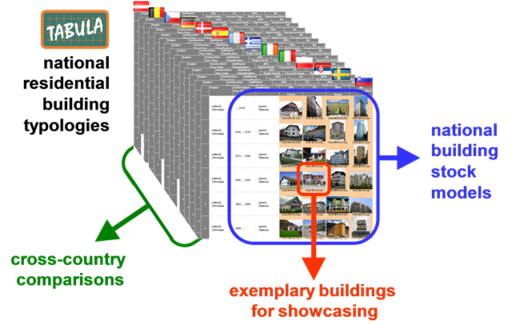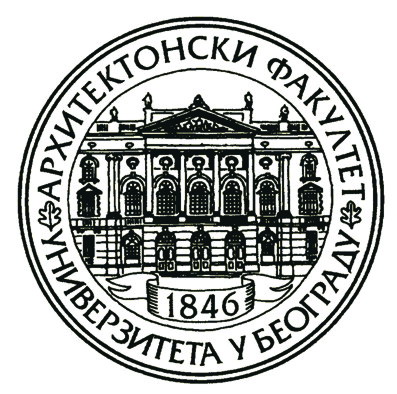- >
- IEE Project>
- IEE Project TABULA
IEE Project TABULA (2009 - 2012)
"Typology Approach for Building Stock Energy Assessment"
Information about the international research project
performed from 2009 to 2012 with the support of Intelligent Energy Europe


IEE Project TABULA – in a Nutshell
During the IEE project TABULA residential building typologies have been developed for 13 European countries. Each national typology consists of a classification scheme grouping buildings according to their size, age and further parameters and a set of exemplary buildings representing the building types. They have been published by the project partners in national "Building Typology Brochures", written in their respective languages. As a common element all brochures contain double page “Building Display Sheets” for all example buildings on which energy related features and the effects of refurbishment measures are illustrated graphically.
To exchange information on the European level the "TABULA WebTool" provides an online calculation of the exemplary buildings from all countries, displaying their energy related features and the possible energy savings by implementing refurbishment measures. Basis of the TABULA WebTool is a simple and transparent reference procedure for calculating the energy need, the energy use by energyware and the energyware assessment (primary energy, carbon dioxide, costs).
Apart from the reference calculation used for cross-country comparison a calibration of the calculated energy use to the typical levels of actual consumption is foreseen – with the intention to enable a realistic assessment of energyware and heating costs savings. Based on the residential building typologies building stock models have been created for seven countries which enable a projection of the actual national building stock consumption and the energy saving potentials.
TABULA Project Partners
|
|
 |
 |
||
 |
|
|||
 |
|
 |
|
|
Associated Partners
 |
|
The associated partners elaborated basic typology elements for their country on a voluntary basis without funding by the IEE programme.
| Tobias Loga Nikolaus Diefenbach Britta Stein |
Institut Wohnen und Umwelt GmbH (IWU) |
Darmstadt, Germany |
| Elena Dascalaki Constantinos A. Balaras |
National Observatory of Athens (NOA) |
Athens, Greece |
| Marjana Šijanec Zavrl Andraž Rakušček |
Building and Civil Engineering Institute ZRMK (BCEI ZRMK) |
Ljubljana, Slovenia |
| Vincenzo Corrado Ilaria Ballarini Stefano Corgnati |
Politecnico di Torino (POLITO) - Dipartimento Energia / Energy Department |
Torino, Italy |
| Hubert Despretz |
Agence de l'Environnement et de la Maîtrise de l'Energie (ADEME ) |
Valbonne, France |
| Michael Hanratty Charles Roarty |
Energy Action Limited |
Dublin, Ireland |
| Marlies van Holm Nele Renders |
Flemish Institute for technological research (Vito) |
Mol, Belgium |
| Malgorzata Popiołek |
Narodowa Agencja Poszanowania Energii S.A. (NAPE) |
Warsaw, Poland |
| Maria Amtmann |
Austrian Energy Agency (AEA) |
Vienna, Austria |
| Zdravko Georgiev |
Sofia Energy Agency (SOFENA) |
Sofia, Bulgaria |
| Karin Spets |
Mälardalens University (MDH) |
Västerås, Sweden |
| Tomáš Vimmr |
STU-K |
Prague, Czech Rep. |
| Kim B. Wittchen Jesper Kragh |
Danish Building Research Institute, (SBi / AAU) |
Hørsholm, Denmark |
| Leticia Ortega Begoña Serrano Lanzarote |
Instituto Valenciano de la Edificación (IVE) |
Valencia, Spain |
| Milica Jovanovic Popovic Dusan Ignjatovic |
University of Belgrade - Faculty of Architecture |
Belgrade, Serbia |

The sole responsibility for the content of this webpage lies with the authors. It does not necessarily reflect the opinion of the European Communities. The European Commission is not responsible for any use that may be made of the information contained therein.


















